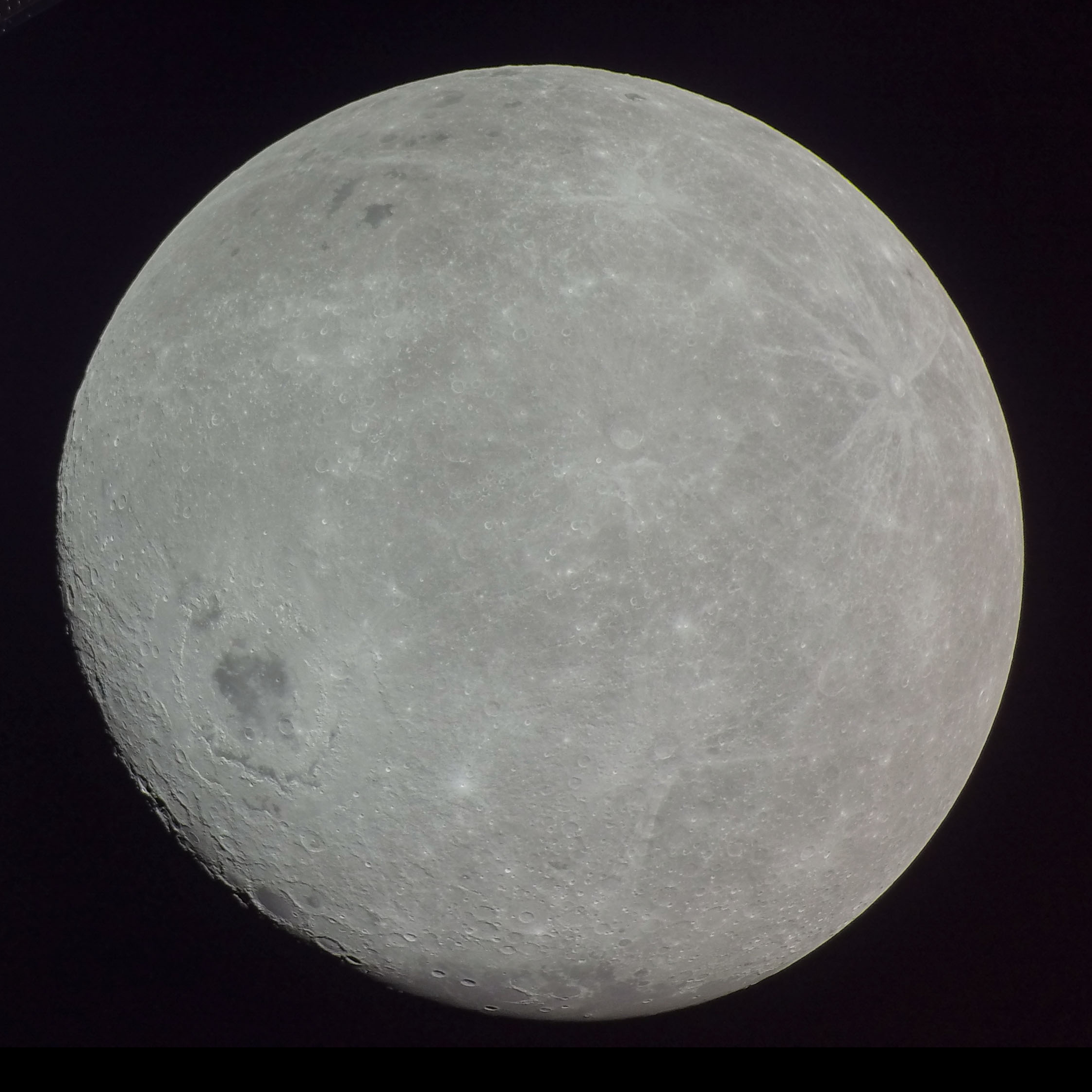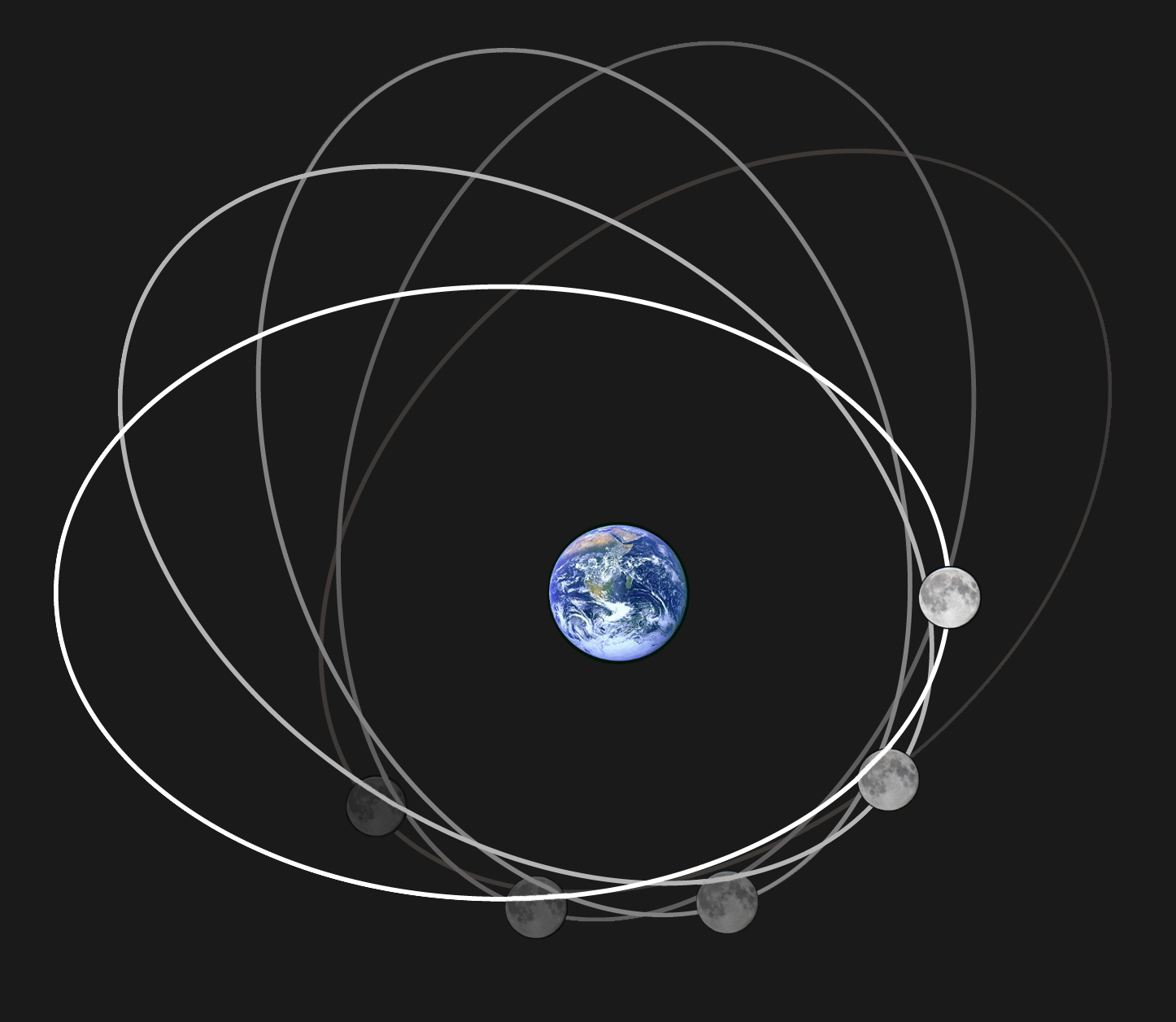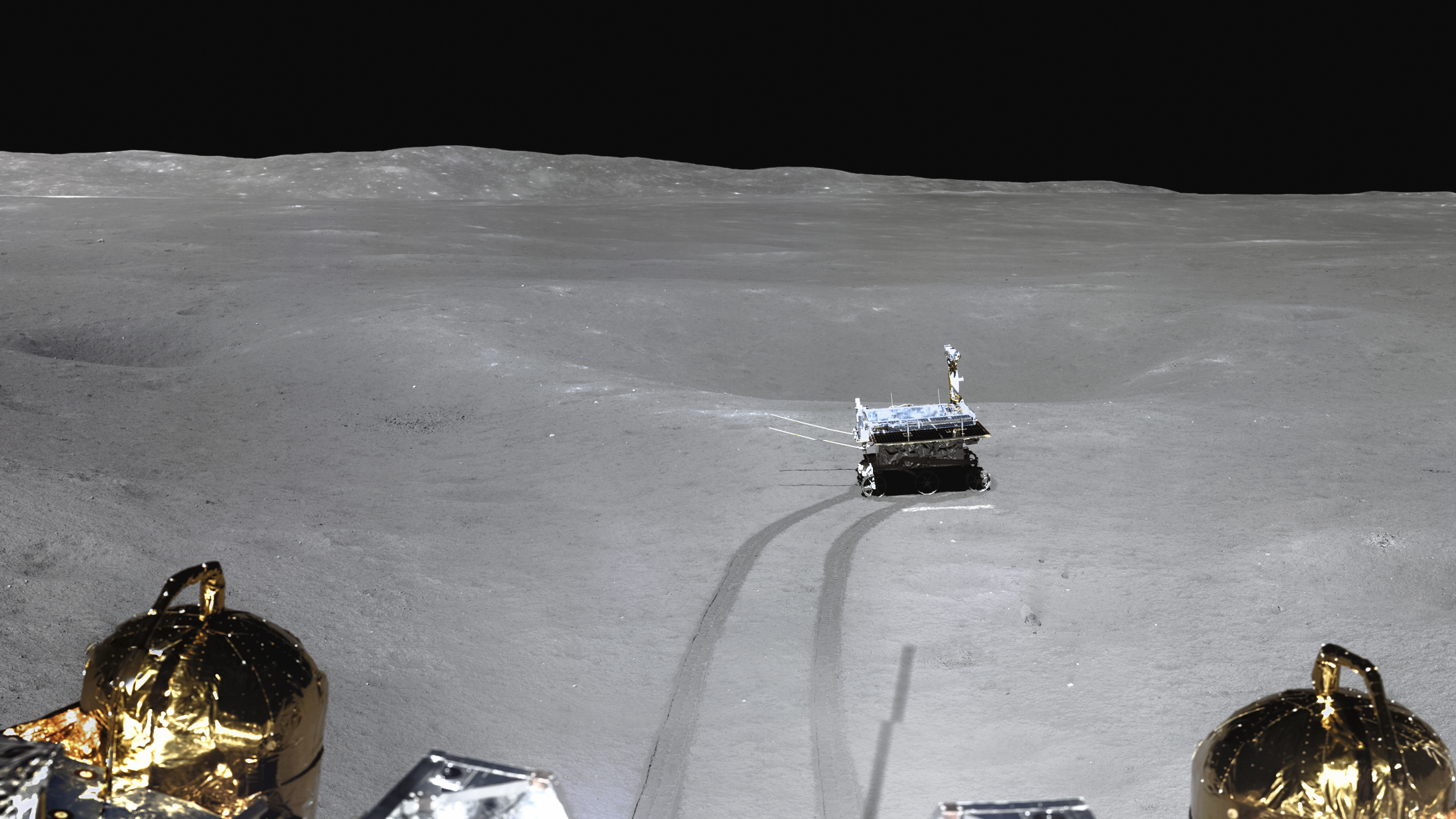|
Libration
In lunar astronomy, libration is the cyclic variation in the apparent position of the Moon that is perceived by observers on the Earth and caused by changes between the orbital and rotational planes of the moon. It causes an observer to see slightly different hemispheres of the surface at different times. It is similar in both cause and effect to the changes in the Moon's apparent size because of changes in lunar distance (astronomy), distance. It is caused by three mechanisms detailed below, two of which cause a relatively tiny physical libration via tidal forces exerted by the Earth. Such true librations are known as well for other moons with locked rotation. The quite different phenomenon of a trojan asteroid's movement has been called ''Trojan libration'', and ''Trojan libration point'' means Lagrangian point. Lunar libration The Moon keeps one wikt:hemisphere, hemisphere of itself facing the Earth because of tidal locking. Therefore, the first view of the far side of ... [...More Info...] [...Related Items...] OR: [Wikipedia] [Google] [Baidu] |
Moon Phases 2019 - Northern Hemisphere - 4K
The Moon is Earth's only natural satellite. It orbits around Earth at an average distance of (; about 30 times Earth's diameter). The Moon rotates, with a rotation period (lunar day) that is synchronized to its orbital period (lunar month) of 29.5 Earth days. This is the product of Earth's gravitation having tidally pulled on the Moon until one part of it stopped rotating away from the near side, making always the same lunar surface face Earth. Conversley, the gravitational pull of the Moon, on Earth, is the main driver of Earth's tides. In geophysical terms, the Moon is a planetary-mass object or satellite planet. Its mass is 1.2% that of the Earth, and its diameter is , roughly one-quarter of Earth's (about as wide as the contiguous United States). Within the Solar System, it is the largest and most massive satellite in relation to its parent planet, the fifth-largest and fifth-most massive moon overall, and larger and more massive than all known dwarf planets. ... [...More Info...] [...Related Items...] OR: [Wikipedia] [Google] [Baidu] |
Locked Rotation
Tidal locking between a pair of co-orbiting astronomical bodies occurs when one of the objects reaches a state where there is no longer any net change in its rotation rate over the course of a complete orbit. In the case where a tidally locked body possesses synchronous rotation, the object takes just as long to rotate around its own axis as it does to revolve around its partner. For example, the same side of the Moon always faces Earth, although there is some variability because the Moon's orbit is not perfectly circular. Usually, only the satellite is tidally locked to the larger body. However, if both the difference in mass between the two bodies and the distance between them are relatively small, each may be tidally locked to the other; this is the case for Pluto and Charon, and for Eris and Dysnomia. Alternative names for the tidal locking process are gravitational locking, captured rotation, and spin–orbit locking. The effect arises between two bodies when their g ... [...More Info...] [...Related Items...] OR: [Wikipedia] [Google] [Baidu] |
Orbit Of The Moon
The Moon orbits Earth in the retrograde and prograde motion, prograde direction and completes one orbital period, revolution relative to the March Equinox, Vernal Equinox and the fixed stars in about 27.3 days (a tropical month and sidereal month), and one revolution relative to the Sun in about 29.5 days (a synodic month). On average, the lunar distance, distance to the Moon is about from Earth's centre, which corresponds to about 60 Earth radii or 1.28 light-seconds. Earth and the Moon orbit about their barycentre (common centre of mass), which lies about from Earth's centre (about 73% of its radius), forming a satellite system called the Earth–Moon system. With a mean orbital speed around the barycentre of , the Moon covers a distance of approximately its diameter, or about half a degree on the celestial sphere, each hour. The Moon differs from most Regular moon, regular satellites of other planets in that its orbital plane (astronomy), orbital plane is closer to the ec ... [...More Info...] [...Related Items...] OR: [Wikipedia] [Google] [Baidu] |
Moon
The Moon is Earth's only natural satellite. It Orbit of the Moon, orbits around Earth at Lunar distance, an average distance of (; about 30 times Earth diameter, Earth's diameter). The Moon rotation, rotates, with a rotation period (lunar day) that is synchronized to its orbital period (Lunar month#Synodic month, lunar month) of 29.5 Earth days. This is the product of Earth's gravitation having tidal forces, tidally pulled on the Moon until one part of it stopped rotating away from the near side of the Moon, near side, making always the same lunar surface face Earth. Conversley, the gravitational pull of the Moon, on Earth, is the main driver of Earth's tides. In geophysical definition of planet, geophysical terms, the Moon is a planetary-mass object or satellite planet. Its mass is 1.2% that of the Earth, and its diameter is , roughly one-quarter of Earth's (about as wide as the contiguous United States). Within the Solar System, it is the List of Solar System objects by ... [...More Info...] [...Related Items...] OR: [Wikipedia] [Google] [Baidu] |
Far Side Of The Moon
The far side of the Moon is the hemisphere of the Moon that is facing away from Earth, the opposite hemisphere is the near side. It always has the same surface oriented away from Earth because of synchronous rotation in the Moon's orbit. Compared to the near side, the far side's terrain is rugged, with a multitude of impact craters and relatively few flat and dark lunar maria ("seas"), giving it an appearance closer to other barren places in the Solar System such as Mercury and Callisto. It has one of the largest craters in the Solar System, the South Pole–Aitken basin. The hemisphere has sometimes been called the "Dark side of the Moon", where "dark" means "unknown" instead of "lacking sunlight" each location on the Moon experiences two weeks of sunlight while the opposite location experiences night. About 18 percent of the far side is occasionally visible from Earth due to oscillation and to libration. The remaining 82 percent remained unobserved until 1959, when ... [...More Info...] [...Related Items...] OR: [Wikipedia] [Google] [Baidu] |
Tidal Locking
Tidal locking between a pair of co-orbiting astronomical body, astronomical bodies occurs when one of the objects reaches a state where there is no longer any net change in its rotation rate over the course of a complete orbit. In the case where a tidally locked body possesses synchronous rotation, the object takes just as long to rotate around its own axis as it does to revolve around its partner. For example, the same side of the Moon always faces Earth, although there is some libration, variability because the Moon's orbit is not perfectly circular. Usually, only the natural satellite, satellite is tidally locked to the larger body. However, if both the difference in mass between the two bodies and the distance between them are relatively small, each may be tidally locked to the other; this is the case for Pluto and Charon (moon), Charon, and for Eris (dwarf planet), Eris and Dysnomia (moon), Dysnomia. Alternative names for the tidal locking process are gravitational locking, c ... [...More Info...] [...Related Items...] OR: [Wikipedia] [Google] [Baidu] |
Lagrangian Point
In celestial mechanics, the Lagrange points (; also Lagrangian points or libration points) are points of equilibrium (mechanics), equilibrium for small-mass objects under the gravity, gravitational influence of two massive orbit, orbiting bodies. Mathematically, this involves the solution of the restricted three-body problem. Normally, the two massive bodies exert an unbalanced gravitational force at a point, altering the orbit of whatever is at that point. At the Lagrange points, the gravitational forces of the two large bodies and the centrifugal force balance each other. This can make Lagrange points an excellent location for satellites, as Orbital station-keeping, orbit corrections, and hence fuel requirements, needed to maintain the desired orbit are kept at a minimum. For any combination of two orbital bodies, there are five Lagrange points, L1 to L5, all in the orbital plane of the two large bodies. There are five Lagrange points for the Sun–Earth system, and five ... [...More Info...] [...Related Items...] OR: [Wikipedia] [Google] [Baidu] |
Galileo Galilei
Galileo di Vincenzo Bonaiuti de' Galilei (15 February 1564 – 8 January 1642), commonly referred to as Galileo Galilei ( , , ) or mononymously as Galileo, was an Italian astronomer, physicist and engineer, sometimes described as a polymath. He was born in the city of Pisa, then part of the Duchy of Florence. Galileo has been called the father of observational astronomy, modern-era classical physics, the scientific method, and modern science. Galileo studied speed and velocity, gravity and free fall, the principle of relativity, inertia, projectile motion and also worked in applied science and technology, describing the properties of the pendulum and "hydrostatic balances". He was one of the earliest Renaissance developers of the thermoscope and the inventor of various sector (instrument), military compasses. With an improved telescope he built, he observed the stars of the Milky Way, the phases of Venus, the Galilean moons, four largest satellites of Jupiter, Saturn's r ... [...More Info...] [...Related Items...] OR: [Wikipedia] [Google] [Baidu] |
Earth
Earth is the third planet from the Sun and the only astronomical object known to Planetary habitability, harbor life. This is enabled by Earth being an ocean world, the only one in the Solar System sustaining liquid surface water. Almost all of Earth's water is contained in its global ocean, covering Water distribution on Earth, 70.8% of Earth's crust. The remaining 29.2% of Earth's crust is land, most of which is located in the form of continental landmasses within Earth's land hemisphere. Most of Earth's land is at least somewhat humid and covered by vegetation, while large Ice sheet, sheets of ice at Polar regions of Earth, Earth's polar polar desert, deserts retain more water than Earth's groundwater, lakes, rivers, and Water vapor#In Earth's atmosphere, atmospheric water combined. Earth's crust consists of slowly moving tectonic plates, which interact to produce mountain ranges, volcanoes, and earthquakes. Earth's outer core, Earth has a liquid outer core that generates a ... [...More Info...] [...Related Items...] OR: [Wikipedia] [Google] [Baidu] |
Trojan Asteroid
In astronomy, a trojan is a small celestial body (mostly asteroids) that shares the orbit of a larger body, remaining in a stable orbit approximately 60° ahead of or behind the main body near one of its Lagrangian points and . Trojans can share the orbits of planets or of large Natural satellite, moons. Trojans are one type of co-orbital configuration, co-orbital object. In this arrangement, a star and a planet orbit about their common barycenter, which is close to the center of the star because it is usually much more massive than the orbiting planet. In turn, a much smaller mass than both the star and the planet, located at one of the Lagrangian points of the star–planet system, is subject to a combined gravitational force that acts through this barycenter. Hence the smallest object orbits around the barycenter with the same orbital period as the planet, and the arrangement can remain stable over time. In the Solar System, most known trojans share the Jupiter trojan, orbit ... [...More Info...] [...Related Items...] OR: [Wikipedia] [Google] [Baidu] |






